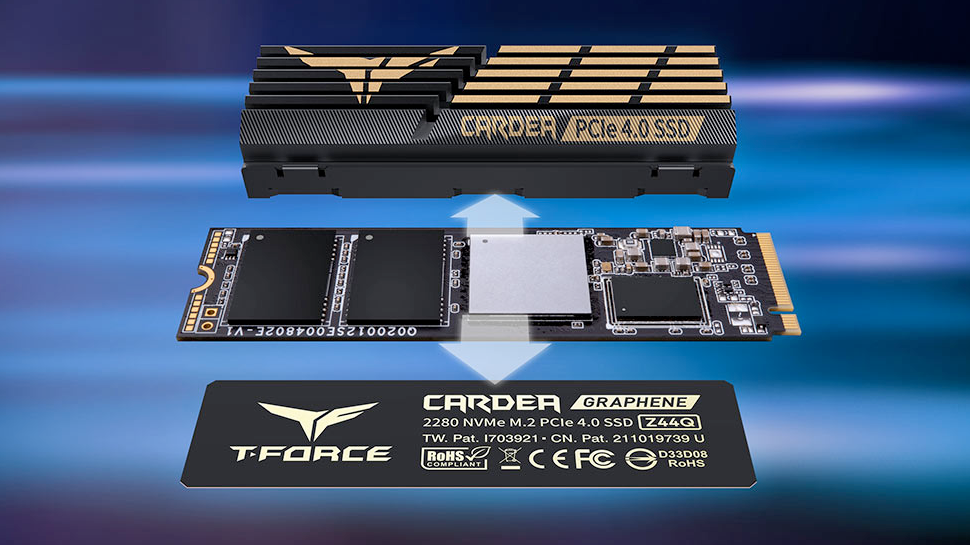TeamGroup Reveals High Performance Z44Q Entry-Level PCIe 4.0 SSD
The new T-Force Cardea Z44Q entry-level SSD delivers up to 5 GB/s.
TeamGroup has unveiled its new entry-level PCIe 4.0 SSD series that combines high performance and high capacity, but uses cheap 3D QLC NAND memory. One of the distinctive features of the new T-Force Cardea Z44Q drives is that they come with two types of cooling systems to be compatible both with desktops and notebooks.
3D QLC NAND memory is used primarily on entry-level SSDs, but performance wise TeamGroup's T-Force Cardea Z44Q drives are rather potent: the 4TB version is rated for up to 5,000 MB/s sequential read speed, up to 4,000 MB/s sequential write speed, up to 350K random read IOPS as well as up to 600K random write IOPS. The 2TB model is just a tad slower than its higher-capacity brother and offers up to 3,700 MB/s sequential write speeds.
TeamGroup's T-Force Cardea Z44Q drives fully support the NVMe 1.4 protocol (with Predictable Latency Mode and Read Recovery Level capabilities), feature a PCIe 4.0 x4 interface, and come in an M.2-2280 form-factor.
Modern high-performance SSDs tend to produce significant heat at high loads and when the overheat, they tend to throttle their performance. SSD makers usually equip their desktop drives with massive aluminum coolers that make them incompatible with notebooks and even some desktop PCs. By contrast, notebook drives come equipped with thin graphene heat spreaders that are sometimes not optimal for desktops. TeamGroup decided to bundle both types of coolers with its T-Force Cardea Z44Q drives, so enthusiasts can install either one depending on their requirements. The aluminum cooler reduces temperature by 15%, whereas the graphene heat spreader lowers temperature by 9%, according to the manufacturer.
Endurance is something that one would like to keep in mind about TeamGroup's T-Force Cardea Z44Q SSDs. The drives are backed by a five-year warranty, which is the norm for today's client SSDs. Yet, the 2TB SKU is rated for up to 400 terabytes to be written (TBW), whereas the 4TB model is rated for up to 800TBW. This translates to 0.1 drive writes per day (DWPD), so 200 GB per day in case of the 2TB SSD and 400 GB per day in case of the 4TB SKU. An average person would hardly ever write 400 GB of data on a drive per day, but for those with write intensive workloads TeamGroup's T-Force Cardea Z44Q may not be exactly an optimal choice.
Team Group has not announced prices of its T-Force Cardea Z44Q drives, but since we are dealing with high-capacity 3D QLC NAND-based models, they are likely to be priced very competitively.
Get Tom's Hardware's best news and in-depth reviews, straight to your inbox.

Anton Shilov is a contributing writer at Tom’s Hardware. Over the past couple of decades, he has covered everything from CPUs and GPUs to supercomputers and from modern process technologies and latest fab tools to high-tech industry trends.

